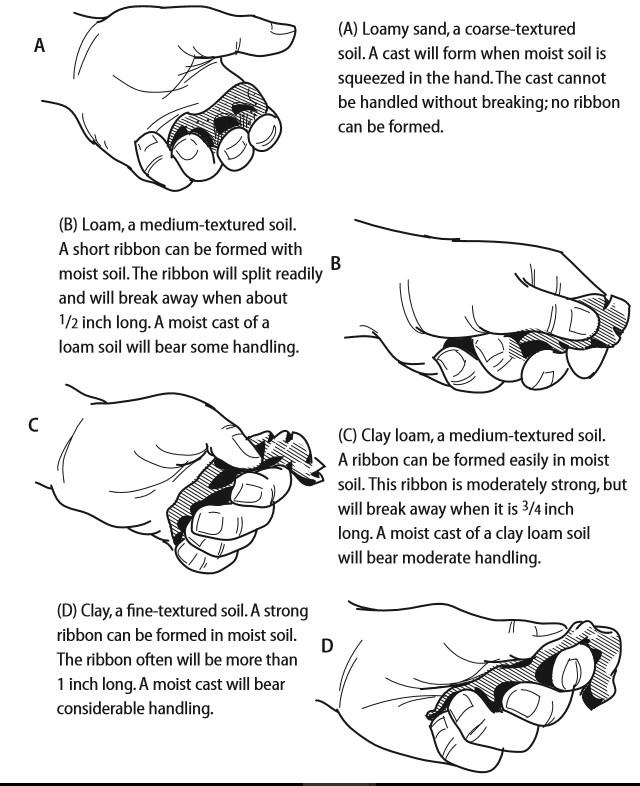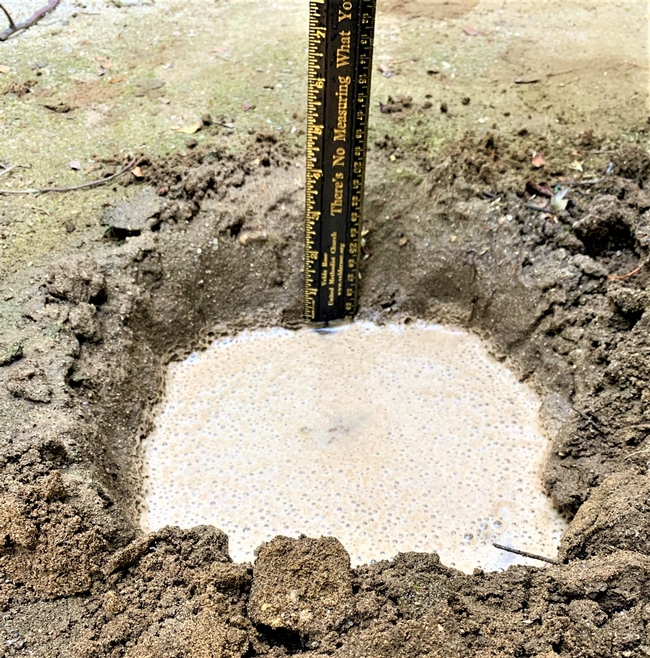- Author: Janet Hartin
Most trees in California need supplemental irrigation above and beyond what Mother Nature supplies naturally. Even drought-resistant species need regular watering through their first growing season due to their shallow roots. Once trees become established, it's important to water less often but more deeply to encourage deep rooting and structural balance above and below ground. Both under and overwatering can lead to unhealthy trees and even death if the situation is not corrected. Trees receiving too little or too much water exhibit similar symptoms since, in both cases, water is not available to the plant. Trees initially wilt, grow slowly, and develop yellow leaves. Over time, growth stops and leaves become brown and drop. Overwatered trees often develop lower crown and root rot from one or more disease-forming pathogens.
Knowing what type of soil you have (soil texture) is as important as knowing the water needs of your trees. Use the ‘feel test' (pictured below) to find out how much water your soil holds and how often to water. Heavier clay-based soils hold water longer and drain more slowly than sandier soils that need to be watered more often for shorter periods of time.
Trees should not be watered on the same irrigation system used for lawns and groundcovers. Soaker hoses and drip systems allow trees to be watered less often but for longer periods of time than your lawn or groundcover. Avoid applying water too close to the trunk. Instead water half-way between the trunk and the dripline of the tree and outward. If you use a garden hose, apply the water on the lowest volume possible slowly, moving the hose every few hours to each of four quadrants around the tree.
Applying a 3-4 inch layer of mulch around the tree can reduce soil evaporation. Use only non-flammable mulches in fire-prone areas within five feet from the house and non-contiguous for the first 30' away from the house. In all cases keep mulch a few inches away from tree trunks to keep the trunks dry.
Tip: Before planting a tree, make sure there is adequate drainage. Dig a hole where you want to plant it (the same depth of the pot, which is about one foot) and fill the hole with water. Let it completely drain and refill it. Measure the time it takes to drain one inch using a ruler. If it does not drain more than one inch an hour it is not a good location for your tree. Avoid adding compost or soil amendments to try to correct the problem since tree roots will likely grow in circles, staying within the confines of the amended hole rather than growing outward the confines of the amended hole rather than growing outward.
- Author: Janet Hartin
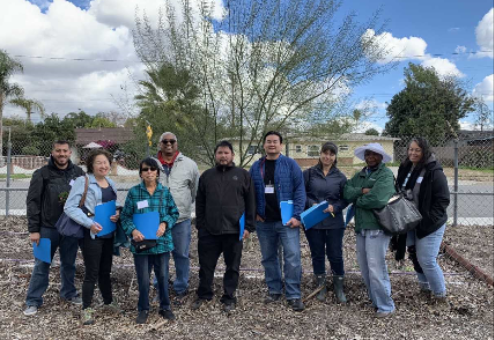
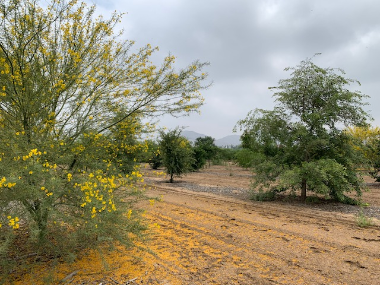
- Author: Janet Hartin
Unlock the Door to One of the Best Kept Secrets in Southern California!
Did you know that University of California Cooperative Extension has trained Master Gardener volunteers ready to answer your home gardening and landscaping questions throughout the greater Los Angeles area?
Email the Master Gardener helpline in the county in which you reside for the most accurate information since climates and conditions vary across the southland:
Los Angeles County: Email: mglosangeleshelpline@ucdavis.edu
San Bernardino County: Email: mgsanbern@ucanr.edu
Riverside County: Email: anrmgriverside@ucanr.edu
Orange County: Email: ucceocmghotline@ucanr.edu
Visit http://mg.ucanr.edu for links to other Master Gardener helplines in over 50 California counties!
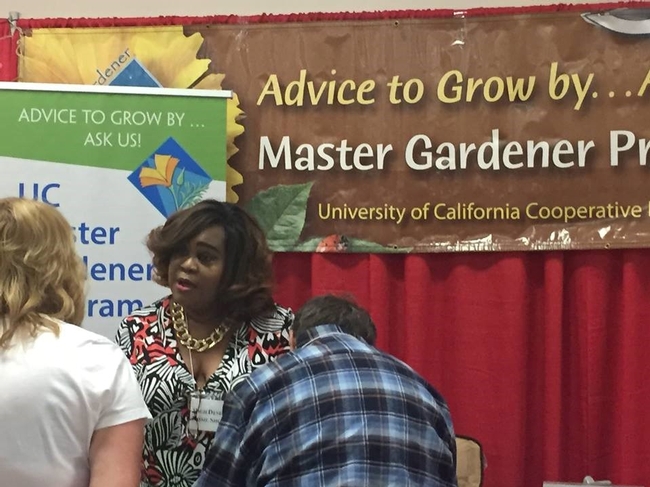
- Author: Janet Hartin
On Friday UCCE San Bernardino County Master Gardener Coordinator Maggie O'Neill and I hosted a tour that showcased UC ANR Urban Water Use Specialist's Amir Haghverdi's landscape plots at the UCR Citrus Experiment Station. In attendance were CEO Scott Kania and Lead Scientist Mark Chandler from EarthWatch, Becky Rittenburg and Monica Curiel from Chino Basin Water Conservation District, and Darrel Jenerette, UC Riverside Professor of Landscape Ecology. Our team is implementing an exciting citizen science project measuring water conservation based on implementing 'best practices' in urban landscapes in the greater Los Angeles Basin.
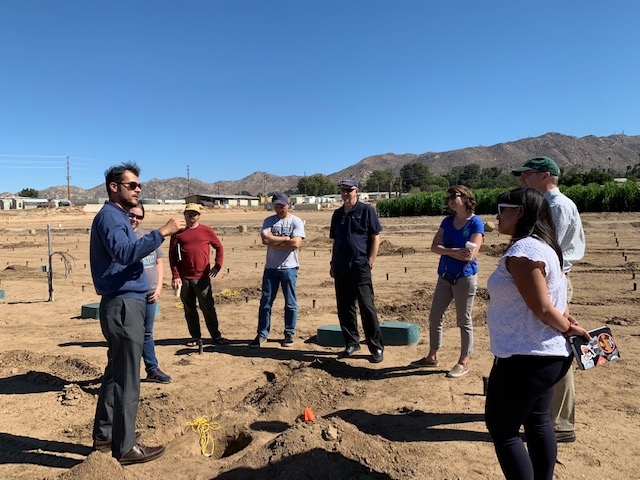

- Author: Janet Hartin
California is in the midst of the worst drought in decades. But you can save your valued trees and landscape plants by following a few simple principles. Watering mature trees deeply just once during mid-summer will keep most species alive, especially if there is a three inch layer of mulch on the top of the soil to keep evaporation down. Be sure to water outward toward the dripline of the tree rather than near the trunk. Keep weeds out of your garden; they will win the water fight. Don't fertilize your landscape during the drought and avoid ripping out your current landscape in the middle of summer to replace it with a drought tolerant one; young plants require more water than established landscapes, and more frequent irrigations. For more information on how to reduce water use in your landscape and garden and to learn more about using graywater from your washing machine to irrigate your landscape click on this link. http://cesanbernardino.ucanr.edu/Drought_Resources/ Janet Hartin, Environmental Horticulture Advisor, University of California ANR Cooperative Extension, San Bernardino, Riverside, and Los Angeles Counties.

